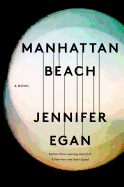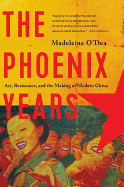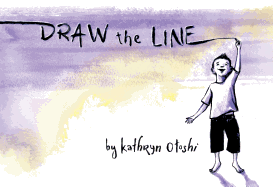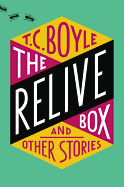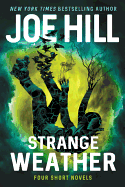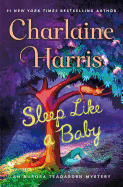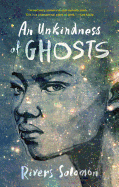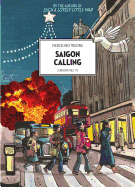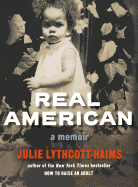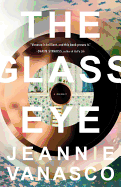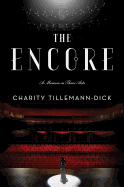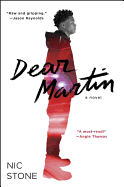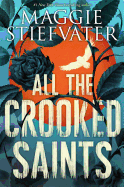Friday, October 27, 2017
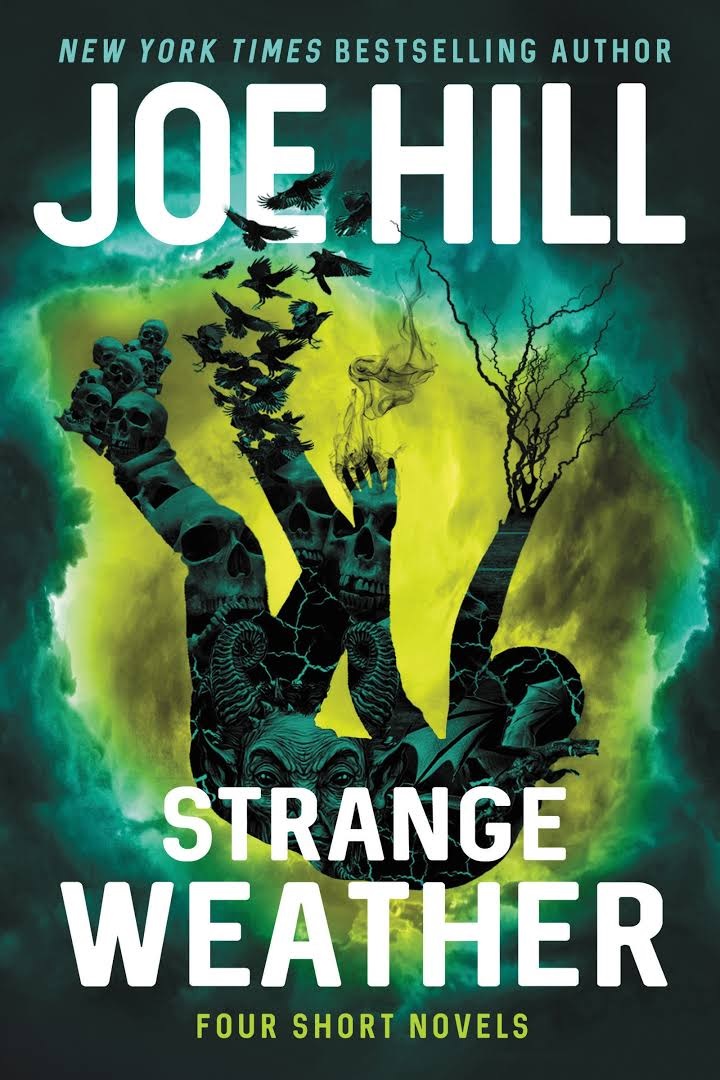 Joe Hill's most recent book, Strange Weather (reviewed below), is a reminder of the strengths of short novels and novellas. Strange Weather collects four of Hill's short novels--terminology is slippery, given that no one can agree on the precise length of novellas--and they ably demonstrate the singularly gripping capabilities of the form. Genre fiction has often benefited enormously from brevity--e.g., The Strange Case of Dr. Jekyll and Mr. Hyde, The Turn of the Screw, A Clockwork Orange. More recently, Tor has revived interest in novellas thanks to an outstanding string of releases including Binti, Forest of Memory and The Sorcerer of the Wildeeps. (Of course, genre fiction is not the sole beneficiary of succinct storytelling--with Denis Johnson's passing we lost one of the greatest writers of short novels and novellas.)
Joe Hill's most recent book, Strange Weather (reviewed below), is a reminder of the strengths of short novels and novellas. Strange Weather collects four of Hill's short novels--terminology is slippery, given that no one can agree on the precise length of novellas--and they ably demonstrate the singularly gripping capabilities of the form. Genre fiction has often benefited enormously from brevity--e.g., The Strange Case of Dr. Jekyll and Mr. Hyde, The Turn of the Screw, A Clockwork Orange. More recently, Tor has revived interest in novellas thanks to an outstanding string of releases including Binti, Forest of Memory and The Sorcerer of the Wildeeps. (Of course, genre fiction is not the sole beneficiary of succinct storytelling--with Denis Johnson's passing we lost one of the greatest writers of short novels and novellas.)
In the afterword to Strange Weather, Joe Hill writes that "short novels are all killer, no filler. They offer the economy of the short story but the depth of characterization we associate with longer works. Little novels aren't leisurely, meandering journeys. They're drag races. You put the pedal to the floor and run your narrative right off the edge of the cliff." In other words, short novels and novellas can hit a sweet spot between short stories and long novels, offering the benefits of both. Getting lost in a world that lasts only one or two sittings often adds a sense of urgency to the work that suits genre fiction. In the case of horror fiction, Hill writes: "You want them to feel like a hand on your throat." While one might not say the same about Train Dreams or Breakfast at Tiffany's, I have a special place in my heart for books that treat every word like a precious resource. --Hank Stephenson
Manhattan Beach
by Jennifer Egan
In both substance and style, Jennifer Egan's Manhattan Beach marks an abrupt departure from her 2011 Pulitzer Prize-winning novel, A Visit from the Goon Squad. She turns away from the artistic high-wire act that illuminated some of the dark corners of American popular culture and instead delivers a story about the machinations of the New York mob amid the United States' effort to defeat Nazi Germany. Nevertheless, Egan again creates a sophisticated, satisfying blend of artfully drawn characters and skillfully plotted drama.
Set principally in Brooklyn in the early 1940s, Manhattan Beach revolves around Anna Kerrigan, whose father, Eddie, a bagman for one of the principals of the "Wop Syndicate," mysteriously disappeared half a decade earlier, leaving behind his wife, Anna, and her profoundly handicapped sister. Anna works as a parts inspector at the Brooklyn Navy Yard, but her ambition is to become a professional diver and repair the massive vessels she gazes at on her lunch hour. In order to overcome the undisguised sexism of that time and achieve her goal, she's forced to prove herself even more skilled than the men against whom she's competing.
One of the most impressive aspects of Manhattan Beach is the verisimilitude of Egan's storytelling. She delivers a terrifying description of a merchant ship crew's battle to survive a U-boat attack in the Indian Ocean. It is Melvillean in its vivid detail, something that's also true of her accounts of Anna's diving exploits. Jennifer Egan has applied her considerable talents to the far-from-simple task of telling an absorbing story, leaving it to readers to ponder the larger meaning of Anna's tale. --Harvey Freedenberg, attorney and freelance reviewer
Discover: On her quest to solve the mystery of her father's disappearance, a woman struggles for acceptance in the male-dominated world of the early 1940s.
The Relive Box and Other Stories
by T.C. Boyle
T.C. Boyle's 11th short story collection, The Relive Box and Other Stories, depicts a world trapped in self-indulgence, unable to recognize its own collapse. Boyle, a prolific novelist and short story writer, is no stranger to using speculative fiction to speak to a larger American moment. In the title story, the mere existence of a memory machine forces a man to lose himself in his past, and in "You Don't Miss Your Water," a community in a drought watches as their bodies and lives shrivel around them. Boyle's stories may depict a world that does not quite exist, but in doing so it best captures the world of today, its boundless appetites and insatiable emptiness.
Despite their unsettling concepts, Boyle's stories ring with tinny humor and compassion. His sparse, clean prose and one-off punch lines feign cool indifference while speaking to the heft that lies beneath the surface of his work. The obsessive characters he so hypnotically renders reveal a grandiosity of passion and sorrow, perhaps best when highlighting what they lack. Whether this is a man's inability to leave his memories alone, or a husband's emotionless response to having a child, Boyle reveals more in the methodical way his characters approach the world than many writers accomplish through melodrama and complicated character revelations. With its kinetic style and bold concepts, this collection reasserts Boyle as a psychological translator for the modern era. --Alice Martin, freelance writer and editor
Discover: T.C. Boyle's measured prose and startling impressions of an uncanny present or near-future will mesmerize readers who are also fans of shows like Black Mirror.
Mystery & Thriller
Strange Weather: Four Short Novels
by Joe Hill
Strange Weather, Joe Hill's follow-up to his horror epics The Fireman and NOS4A2, is a collection of four novellas that celebrate the breadth of Hill's twisted imagination. Each brief novel can be read in a sitting or two, but are long enough to allow for Hill's expert characterization--carefully establishing sympathetic characters grounds the strange, nightmarish scenarios and insures the readers' investment in the torments that await each character.
In "Snapshot," lonely Michael Figlione looks out for his former babysitter, an older woman struggling with something like dementia. She claims that a man has been snapping Polaroids of her when her husband isn't watching, and Michael soon learns the disturbing truth. "Loaded" is more politically charged, ruminating on America's gun culture, racial inequities in policing and mass shootings. "Aloft" offers a fantastical story about a reluctant skydiver stranded on a bizarre cloud. It possesses a strange intelligence that the protagonist must puzzle out while sorting through his unrequited feelings for a friend. The less said about the premise, the better--unspooling the mystery is half the fun. Finally, "Rain" strikes an apocalyptic chord with its story of a devastating, nail-like rain that shreds anyone and anything unlucky enough to be outside when the storm breaks over Boulder.
Hill never shirks from delivering the gory goods for genre fans, but his horror is far from cynical. Instead, Hill finds striking, unusual ways to dramatize fears of aging and illness, guns, loneliness and grief. His intentions and limitless creativity are extremely well suited to short fiction, and one hopes that another collection is forthcoming. --Hank Stephenson, bookseller, Flyleaf Books, Chapel Hill, N.C.
Discover: Strange Weather is a collection of four short novels showing off Joe Hill's impressive range as a horror storyteller.
Sleep Like a Baby
by Charlaine Harris
More than a decade before she started writing her Southern Vampire Mysteries featuring Sookie Stackhouse and a supernatural world, Charlaine Harris won readers' affection when she introduced librarian and amateur sleuth Aurora Teagarden in a series of cozy mysteries. This 10th outing, Sleep Like a Baby, begins with Aurora giving birth to little Sophie, the infant she was carrying in 2016's All the Little Liars. Two months later, Aurora is in need of a nurse to help with the baby for a couple days, while she recovers from a mysterious flu and her husband, Robin Crusoe, attends an out-of-town awards ceremony for mystery writers.
During the night, Aurora is awakened by Sophie's crying and discovers that her nurse-for-hire, Victoria, is missing. When Aurora and her teenage half-brother, Phillip, begin searching for the missing RN, they discover a dead woman under a tree in their yard. The body is almost immediately identified as Tracy Beal, a stalker fan of Robin who had previously tried to kill Aurora. While struggling to regain her strength, Aurora tries to figure out who killed Tracy and what happened to Victoria. Clues and red herrings involve a purse snatching, some anonymously sent flowers, a barking dog, an active shooter, a family medical crisis and footage from a hidden nanny camera.
Sleep Like a Baby is a leisurely paced cozy graced with likable and sympathetic characters, deadpan humor and plenty of clues sprinkled throughout to delight mystery buffs. Harris spins her tale with relaxed ease and confidence. --Kevin Howell, independent reviewer and marketing consultant
Discover: Charlaine Harris's 10th Aurora Teagarden mystery finds the new mother and librarian searching for a missing nurse and the person who left a dead body in her yard.
Science Fiction & Fantasy
An Unkindness of Ghosts
by Rivers Solomon
Rivers Solomon is a bold new voice in speculative fiction. This startling debut delves into issues of class, race and gender on a futuristic spaceship whose society mimics the antebellum American South.
Born on the generation starship HSS Matilda, dark-skinned Aster and her fellow low-deckers labor in the Field Decks that rotate around Baby Sun, a fusion reactor that nourishes the ship's crops. The light-skinned ruling class that inhabits the upper decks controls their work, reproduction and living conditions, treating them as a subhuman species that exists to serve on their way to a storied Promised Land. Brilliant, angry Aster works as a healer, with tutelage from her upper deck friend Theo the Surgeon, and commits the odd act of sabotage on the side. Considered a freak for her eccentricities and literal mind, Aster takes solace in her friendship with delusional, suicidal Giselle. When she notices similarities between the illness of the Sovereign who rules the vessel and the condition her mother suffered before her suicide years ago, Aster undertakes a dangerous investigation that will upset everything the people of Matilda believe.
Though shaped like the past transported into the future, Solomon's narrative seethes with underpinnings of the present carried to the extreme, a police state where women have lost reproductive rights and people of color face servitude and constant brutality. Complex and prophetic, An Unkindness of Ghosts will have readers cheering Aster as she fights for her freedom. --Jaclyn Fulwood, blogger at Infinite Reads
Discover: Enslaved on a generation ship in the far future, Aster finds a link between the death of her mother and the illness of the ship's ruler.
Graphic Books
Saigon Calling: London 1963-75
by Marcelino Truong, transl. by David Homel
Marcelino Truong's Such a Lovely Little War provided a child's perspective of the early years of the Vietnam War, culminating in the family's flight to London after the assassination of South Vietnamese President Diem in 1963. Its follow-up, Saigon Calling: London 1963-75, describes Marco's coming-of-age in late 1960s England, where his siblings struggled to endure their mother's mental illness while witnessing the fall of South Vietnam.
The Truong family settles in London after leaving war-ravaged Vietnam. The chaos has affected each family member differently. Yvette's mental illness terrorizes them all, while Papa, having left behind his lucrative ambassadorial duties with the government, struggles to support his family as a French-to-English newspaper translator. Older sister Mireille becomes a hippie and participates in the peace movement. Marco continues to play war games with brother Dominique while reveling in the excitement of British mod subculture, much to their mother's intense disapproval. His personal connections to Vietnam, and to the friends and family members threatened by the escalating violence and muddled politics, are never far from his mind.
Truong contrasts monochromatic watercolors with bright imagery to depict opposing cultural pulls. The art is crisp and stylized; the text emotive and reflective. While his sympathies lie with the South, Truong is critical of American involvement, whose actions would culminate in the persecution of millions of Vietnamese citizens.
Saigon Calling is an intimate and courageous piece of storytelling. It provides insight into the suffering that Vietnamese expatriates endured, especially those of mixed race heritage, and of the painful bonds forged with their past, present and future. --Nancy Powell, freelance writer and technical consultant
Discover: Marcelino Truong's follow-up to Such a Lovely War is a gripping coming-of-age tale set against the backdrop of war and British mod culture.
Biography & Memoir
Real American
by Julie Lythcott-Haims
In the vein of Ta-Nehisi Coates's Between the World and Me and Claudia Rankine's Citizen, Julie Lythcott-Haims's Real American fuses autobiography with politics, showing how the sinister nature of racism (institutional and otherwise) scars even those who may pass as unaffected. Told in a series of short chapters that often read as prose poems, the memoir is a look at Lythcott-Haims's past that relentlessly digs into what it means to be black in America.
Author of How to Raise an Adult, a critique of modern parenting, Lythcott-Haims is the child of an African American doctor (once the Assistant Surgeon General to the United States) and a white British mother. But part of Real American is Lythcott-Haims's shedding of the term "bi-racial," and coming to understand that she identifies as black, both in response to personal struggles and the larger forces in American culture. Real American is about acceptance, but also anger, and the ongoing struggle for equality in the United States (something that eludes Lythcott-Haims, even with two Ivy League degrees and a comfortable upper-middle-class life). She depicts how the treacherousness of racism is so pervasive--it so easily permeates her interactions--that no level of success has been enough to quell her feelings of self-hatred, inherited from American culture due to the color of her skin. Real American is not an easy read, taking a combative stance toward anyone who thinks they are on firm footing regarding race, and the book is all the better for it. --Noah Cruickshank, adult engagement manager, the Field Museum, Chicago, Ill.
Discover: Real American is a poetic memoir that dives deep into the pervasiveness of racism in the United States.
The Glass Eye: A Memoir
by Jeannie Vanasco
Jeannie Vanasco's The Glass Eye is an intense and unforgettable memoir, as fascinating for its artistry as for its subject matter. Jeannie was 18 when her father died. He had been her hero, her perfect person. On his deathbed, Jeannie promised him she would write about him. Although there is no sign that he heard, let alone held her to it, this promise would haunt the increasingly troubled young woman for years to come.
Her father had lost his left eye and wore a prosthetic one, which was in fact plastic, "but sometimes I call it glass. Glass implies the ability to be broken." He lost his left vocal cord, too, and her mother loses hearing in her left ear. "What will be left of me if I lose her?" Jeannie's father had a daughter before her, from an earlier marriage, who died in a car accident. That daughter was Jeanne; the daughter who promised to write this book is Jeannie, pronounced the same but with an added i. She fills her book with meditations on glass and left.
Vanasco pays compulsive attention to metaphors, and to the project of writing this memoir, which becomes a meta-exercise observing itself. She asks the professor in her memoir course, "What if it's about the promise to write the book?" Lyric, haunted, smart and tortured, this is an obsessive love letter to a dead father as well as a singular work of literature. The Glass Eye will attract memoir fans and readers concerned with mental illness and bereavement, as well as writers concerned with craft. --Julia Kastner, librarian and blogger at pagesofjulia
Discover: A devoted, tormented daughter eulogizes a beloved father in this thought-provoking and experimental memoir.
The Encore: A Memoir in Three Acts
by Charity Tillemann-Dick
Opera singers know drama--they have to, so they can pour themselves into demanding, heart-stirring roles. But Charity Tillemann-Dick didn't expect her personal drama to include two double-lung transplants in three years. Diagnosed with a rare and usually fatal pulmonary condition, she was determined to keep singing even through her grueling treatments and first lung transplant. But as her medical condition worsened, she wasn't sure she would survive. In her memoir, The Encore, Tillemann-Dick shares the story of her singing career, her illness and recovery, and the incredible love and support of her family, her doctors and the man who became her husband.
Like many memoirs of illness and recovery, Tillemann-Dick's story occasionally becomes a blur of tests and hospitals, doctors and nurses, medical setbacks and triumphs. But her clear-eyed, fresh voice--honest almost to a fault--keeps the narrative from becoming saccharine or too repetitive. Her Mormon faith runs throughout like a leitmotif from one of her beloved operas, adding depth and dimension to an already powerful story.
Fittingly for an opera or a life, The Encore contains a few glamorous "aria" moments: Tillemann-Dick's debut at Lincoln Center, her TED talk and the attention it garners. But those scenes pale in comparison, as they should, to the supporting "recitative" sections: the selfless love and devotion of her supporting cast of doctors and loved ones, and Tillemann-Dick's own resilience and determination to keep singing however she can. --Katie Noah Gibson, blogger at Cakes, Tea and Dreams
Discover: Opera singer Charity Tillemann-Dick shares the story of her two double lung transplants and incredible recovery.
History
The Phoenix Years: Art, Resistance, and the Making of Modern China
by Madeleine O'Dea
Modern China is much more than tanks confronting protestors in 1989's Tiananmen Square massacre or thousands of white-suited women churning out zillions of TV screens. Australian journalist Madeleine O'Dea saw plenty of the latter in her three decades covering the economic miracle of Deng Xiaoping's liberalization for the Australian Financial Review and ABC television. But it was her inquisitive and dogged access to nine outlaw Chinese artists, poets and musicians that led her into the hutongs where they "drank and discussed, read, painted and wrote poetry, and dreamt up ways to burrow in the cracks that were opening up in society." These artists are at the heart of The Phoenix Years, O'Dea's personal cultural history of China--from Mao's last bloody crackdown on the Qing Ming demonstrators in 1976 to the deportation in 2014 of famous conceptual artist Guo Jian. She was there. She became friends with the young avant-garde trying to express themselves in a state bent on restricting personal freedom.
The Phoenix Years is O'Dea's story of learning as much about herself as of the Chinese bohemians living through the intellectual excitement of the Chinese miracle. As she observes, "I found myself having to have opinions again on T.S. Eliot or Albert Camus or Nietzsche or Freud... I found myself thinking more deeply about my own culture than I had ever done before." Including sample illustrations of the artists' work, a helpful pronunciation guide to their names and a useful parallel timeline of politically and culturally significant events, The Phoenix Years is an essential background history of modern China--personal reporting that shows how economic freedom and artistic freedom must go hand in hand. --Bruce Jacobs, founding partner, Watermark Books & Cafe, Wichita, Kan.
Discover: Australian journalist Madeleine O'Dea captures the intellectual excitement of the bohemians of modern China while enriching her own understanding of Chinese history.
Children's & Young Adult
Draw the Line
by Kathryn Otoshi
The opening double-page spread of Kathryin Otoshi's wordless Draw the Line depicts two children on different pages, each absorbed in drawing a line. The barefoot children are dichromatic opposites: one light-skinned with dark hair, one dark-skinned with light hair; one in a black shirt and white pants, the other in a white shirt and black pants. A swathe of brilliant yellow hovers over each child.
There is a shock of purple surprise as the two accidentally bump into each other. They laugh and begin drawing together, discovering that, when their lines touch, they become one tangible object, like a rope. The happy yellow surrounds the children at play. One of the two exuberantly leaps off with their end of the line, inadvertently yanking the other and knocking them down. The fallen child sits in purple-hazed annoyance before intentionally pulling on the line to make the other child fall. The joyous yellow dissolves over the next few spreads as the two children pull and pull until they create a dark charcoal chasm between them. The now purple and black watercolor washes across the page like a storm cloud.
Their anger quickly becomes despondence and then loneliness until one of the children discovers they can draw lines across the chasm; a tiny hint of yellow washes out the black. The children smudge the chasm out and, the line now the horizon, run off together into a radiant yellow and purple sunset.
Kathryn Otoshi (One) makes fantastic use of the gutter, the children interacting with each other from their own sides, reminiscent of Chris Raschka's 1994 Caldecott Honor Yo! Yes? Otoshi's watercolor illustrations are arresting and her characters so expressive, the youngest of readers may easily fill in the textless story for themselves. --Siân Gaetano, editor children's and YA, Shelf Awareness
Discover: Two children become friends, quarrel and resolve their differences in this striking wordless book by Kathryn Otoshi.
Dear Martin
by Nic Stone
Of course, high school senior Justyce knows who Dr. Martin Luther King, Jr. was--he's one of "only eight black kids" at Braselton Preparatory Academy in Atlanta. But Justyce hasn't spent much time thinking about Dr. King and doesn't consider himself one of "THOSE black guys." When he's assaulted by a police officer for helping a drunk girl at a party, however, he realizes that the world sees him differently than he sees himself; he starts looking to Dr. King for guidance because he "can't continue to pretend nothing's wrong." Justyce writes to Martin, as he calls him, throughout the fall, puzzling over the world he's been born into and his relationship to it as a young black man. Writing to Martin gives Justyce a measure of comfort, but after an off-duty white cop shoots at him and kills his best friend, even Martin's words are powerless in the face of what's to come.
In her first novel, Nic Stone uses Justyce's irrepressible curiosity and righteous anger to guide the reader through a nuanced examination of prejudice and racial injustice. Because Justyce lives at the intersection of several identities, he is able to understand every side of each incident--even those he opposes--and Stone's realistic writing brings both his confusion and hard-won clarity to life. Stone combines different formats (like screenplay formatting for conversations) with teenage language (such as "prolly" in place of probably) to keep the story accessible, and she never shies away from deep engagement with the ramifications of racism. As a result, while the plot grows increasingly painful, it is never too heavy to bear, and contemporary teens will be delighted to speed through a book by an author who so clearly respects their voices and concerns. --Stephanie Anderson, assistant director of selection, BookOps, Brooklyn Public Library and the New York Public Library
Discover: A bold, character-driven debut that centers on teens and their experience of the struggle for racial justice in the United States.
All the Crooked Saints
by Maggie Stiefvater
In 1962, in the "dark, true-dark" of the desert, 18-year-old Beatriz Soria and her cousins transmit their "pirate" radio show from the back of a box truck. Though the DJ is Diablo Diablo (Joaquin), it is Beatriz's logical mind that powers this enterprise. Daniel, "the Saint of Bicho Raro," comes along as well, but he's more concerned with miracles.
The entire Soria family can perform miracles, but Daniel is the "best saint that Bicho Raro had experienced for generations." Pilgrims flock to the ranch, where miracles come in twos. The first, performed by the Saint, will make the darkness inside a person visible. The second, "getting rid of the darkness for good," is up to the pilgrim--the Sorias cannot interfere or "a darkness would fall on the Soria as well, and a Saint's darkness" is a "terrible and powerful thing." Unable to forgive themselves, Bicho Raro's current pilgrims have not been able to perform their second miracle and move on. The pilgrims are stuck in drawn-out darkness and the Sorias are stuck with the pilgrims. Until now.
The Saint of Bicho Raro has fallen in love with Marisita, a girl whose first miracle left her in the center of a rainstorm with a butterfly-covered dress. Despite the taboo, Daniel interferes and his darkness comes. To protect his family, he takes off for the desert, demanding that no one follow.
Skimming back and forth through time, Stiefvater's (The Scorpio Races, the Raven Cycle) tale is gorgeously told, unfurling like the black roses Francisco Soria obsessively cultivates in his greenhouse. Beatriz has never wanted to be the Soria's Saint but she must push through her own fear and darkness and use her magic, her intellect and her "complicated and wiry heart" to save her beloved cousin. --Lynn Becker, blogger and host of Book Talk, a monthly online discussion of children's books for SCBWI
Discover: A saint, a scientist and a DJ perform miracles (and science) in the Colorado desert.


